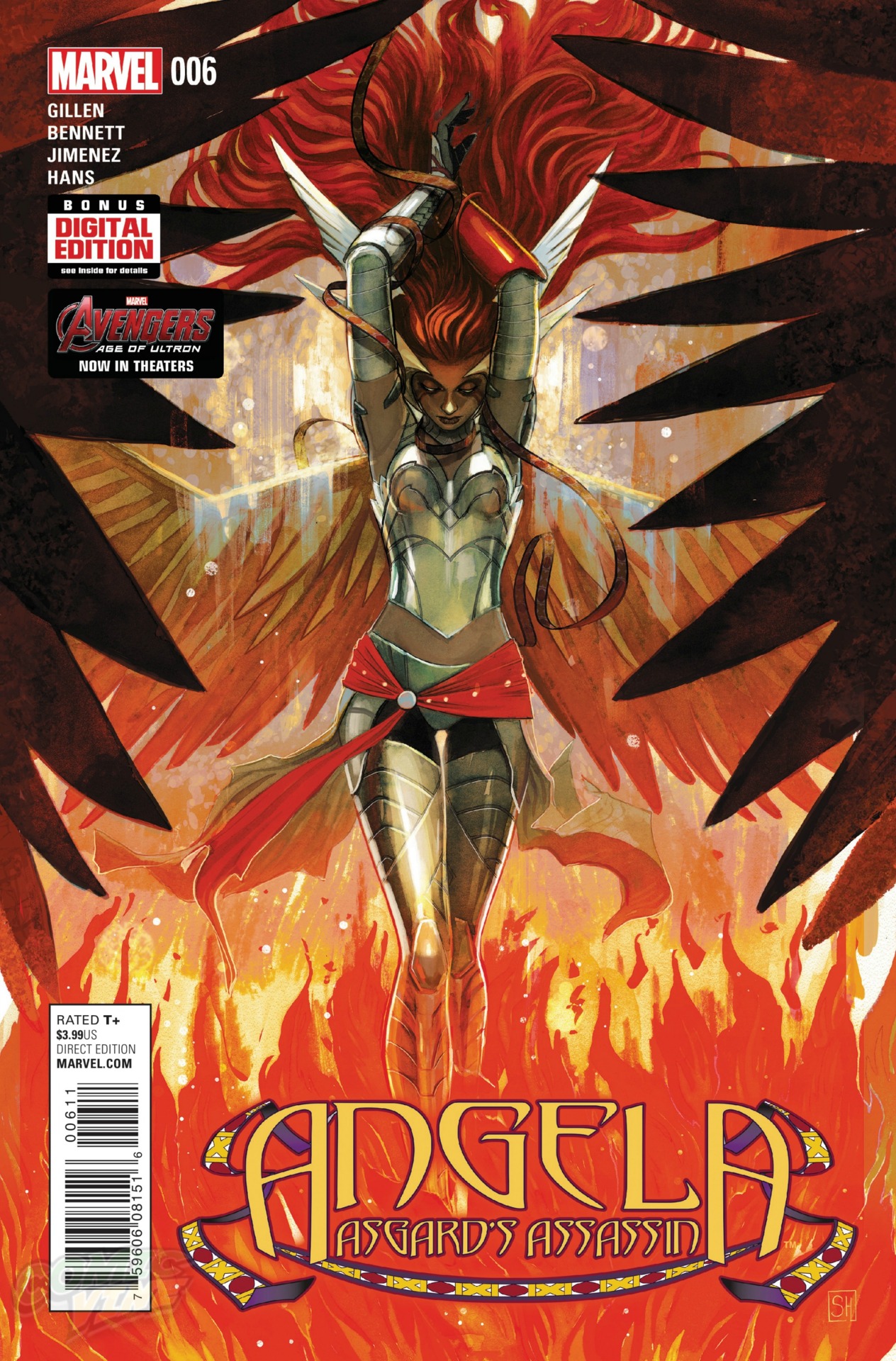Review: Marvel’s Angela: Asgard’s Assassin #1-6
Featuring a trans woman of color side-kick, and kick-assery.

It’s comforting to know that whatever happens to Angela post-Secret Wars, however she may fare in 1602, she got a fantastic arc in Angela: Asgard’s Assassin.
Much of what makes (made? … that’s so sad) A:AA great has been addressed in detail in previous reviews, but just to recap:
Phil Jimenez and Stephanie Hans’ artwork is breathtaking. The character designs are interesting and varied, the action sequences are beautifully realized and the use of color is just, like… the best.
Angela remains a fantastic protagonist whose stoicism is nicely balanced out by her supporting cast and her Vulcan-esque moral code serves as an intriguing source of motivation throughout the series.
The story is… fine as a conduit for action and character interaction, but it’s neither unpredictable nor challenging enough to be anything special. Angela’s journey to “destroy” her Demon!baby little sister concludes just as you expect it to (*hint* Angela’s likeable, remember?). While I am, of course, grateful that writers Kieron Gillen and Marguerite Bennett opted out of having Angela actually commit infanticide, I’d have preferred they not waste time trying to convince me she had … because I never thought for a second that that baby was truly in danger. Some series like The Walking Dead are dark enough to go there. A:AA isn’t one of them. We all know that. Don’t try to convince us otherwise, writers.
One plot development that I did not see coming, however (mainly because it was never foreshadowed or built up to in any way) was the reveal of Sera’s fate. I appreciate that, in an industry in which characters come back from the “dead” willy nilly at this point, the grand, long-awaited explanation behind Sera’s resurrection (spoilers) is “Eh … nope. She really is dead.”
Not only does it look to be leading into some sort of retelling of Orpheus and Eurydice (I don’t consider myself a romantic but <3 <3 <3) but it also places Sera at the center of the next arc, which is important. Sera, in addition to being a well-written character, is a heavy-set (again, by comic books standards), transgender woman of color. That sort of representation should not be relegated to the sidelines which, let’s face it, she sort of was for this first arc.
So, good luck, Angela. Good luck with witch hunting, universe consolidation and going “to Hel” (whenever that’ll be). Wherever you go next… I’ll be reading.
Petra Halbur is a writer traversing the perilous terrain of post-graduate life whilst trapped in the world-building phase of developing her science-fantasy graphic novel. You can read more from her at Ponderings of a Cinephile or follow her on Twitter.
—Please make note of The Mary Sue’s general comment policy.—
Do you follow The Mary Sue on Twitter, Facebook, Tumblr, Pinterest, & Google +?
Have a tip we should know? tips@themarysue.com